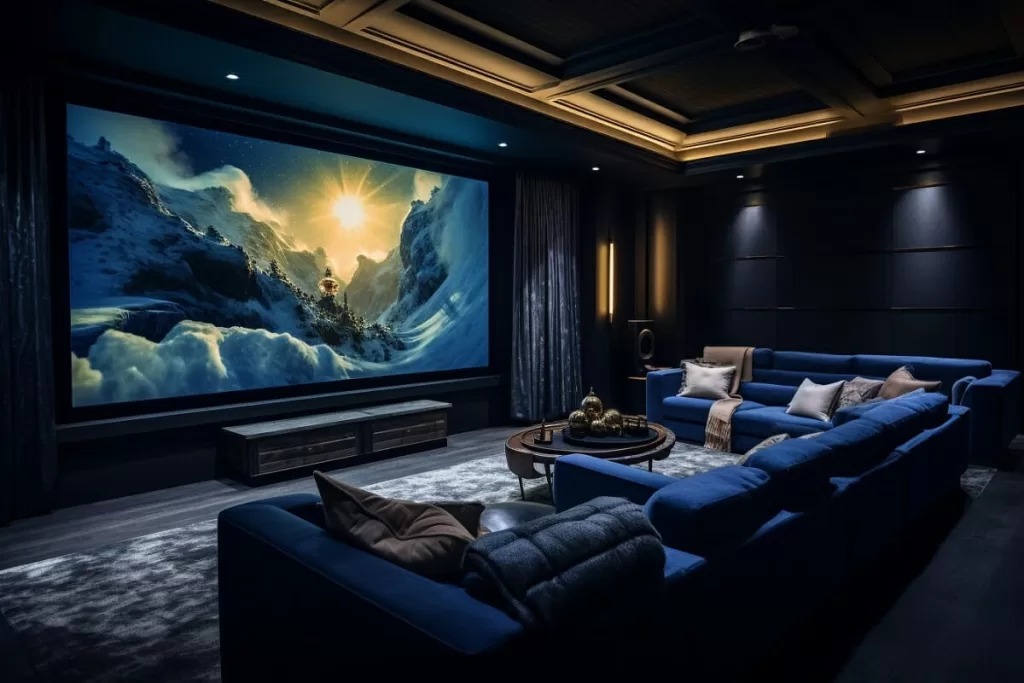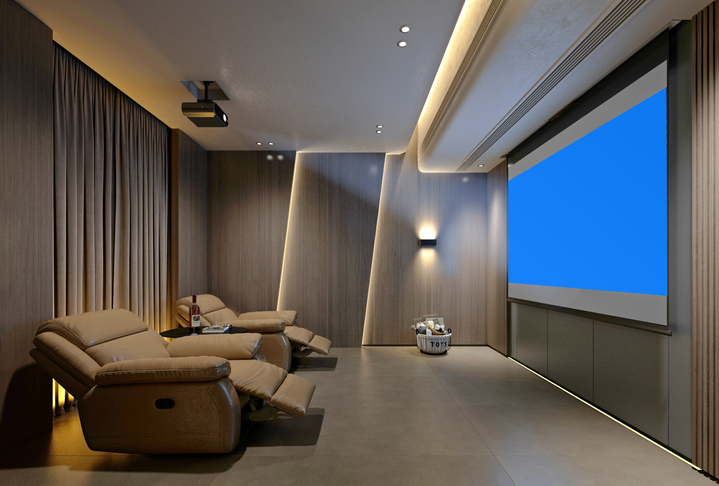Home Theater Tampa: Bringing Cinematic Experiences Directly to You
Home Theater 101: Every Little Thing You Need to Know for a Motion Picture Experience in your home
Producing a home theater that matches the cinematic experience of an industrial theatre involves careful consideration of multiple components, including display selection, sound systems, and space format. Whether you are considering the optimal display size or the complexities of surround audio, comprehending these basics is crucial.
Selecting the Right Screen
When establishing a home cinema, selecting the best screen can make or damage the seeing experience - tampa home theater. The screen works as the focal point of your configuration, influencing image top quality, viewing angles, and overall visual. Key factors to consider consist of display type, resolution, and dimension
First, identify the proper screen dimension based upon your area dimensions and seating range. A general standard is to sit about 1.5 to 2.5 times the diagonal screen dimension for optimal viewing. Next, select in between numerous display types, such as fixed-frame, motorized, or retractable displays, each offering unique advantages. Fixed-frame displays normally offer the best photo top quality, while mechanized alternatives permit versatility in area usage.
Resolution is one more vital element. For a truly immersive experience, take into consideration a display made for 4K or also 8K web content, making sure sharpness and clearness. Furthermore, consider the screen's gain, which impacts illumination and contrast; a higher gain can improve brightness in well-lit rooms, while a reduced gain might be preferable for darker environments.
Picking Audio Equipment
Audio devices is a vital component of any home cinema system, considerably boosting the general watching experience. The choice of audio equipment can figure out the deepness, clearness, and immersion of sound, vital for producing a cinematic ambience.
When selecting audio tools, take into consideration a surround stereo, which normally consists of a receiver, several speakers, and a speaker. A 5.1 or 7.1 channel system is suggested, where the very first number represents the audio speakers and the 2nd the subwoofer, providing an immersive soundscape. The receiver is the heart of the system, handling sound and video clip signals, and ought to support modern formats like Dolby Atmos for an enhanced spatial experience.
Quality audio speakers are vital; appearance for versions that provide a balanced audio profile with great bass response. Floor-standing speakers can create richer noise, while bookshelf alternatives conserve space. In addition, consider cordless options for simplicity of installation, although wired systems frequently supply premium efficiency.

Optimum Seating Arrangements
Developing an excellent home movie theater experience hinges significantly on ideal seating plans. The plan of seats plays a vital duty in both comfort and seeing top quality, directly affecting the total cinematic experience.
First, take into consideration the display dimension and viewing distance. A common standard is to place seats at a range approximately 1.5 to 2.5 times the diagonal size of the display. This makes sure an immersive experience without straining the eyes.
Following, altitude is crucial. The back rows need to be higher than the front to stay clear of obstructions if your seats is in a tiered format. For flat seats, guarantee that the front row is not also near the display, and that everyone has a clear line of vision.
In addition, think about the setup in regards to social characteristics. Team seating can boost the public experience, while specific seats might be preferred for personal watching.

Lastly, prioritize convenience with ergonomic seating that supports prolonged try this out viewing periods. Integrating recliner chairs or supported seats can substantially boost the experience, making the home movie theater a favored destination for both enjoyment and leisure.
Lighting and Setting
Effective lights and atmosphere are essential elements of a well-designed home movie theater, as they considerably influence the viewing experience. The appropriate illumination can boost the cinematic feel, while inadequate choices can diminish it. For optimal results, take into consideration a layered lights strategy that includes ambient, job, and accent lights.
Ambient lights provides general lighting, ensuring that the room is not completely dark, which can strain the eyes. Dimmer switches are extremely recommended, permitting changes based upon the content being seen. Task illumination, such as wall surface sconces or flooring lamps, provides functional illumination for activities like reading or navigating the room without disrupting the overall atmosphere.
Accent lighting can be utilized to highlight building attributes or produce prime focus, including deepness and rate of interest to the area. LED strip lights behind displays or along shelves can give a refined radiance that improves the aesthetic experience without overwhelming the customer.

Wiring and Installation Tips
A well-planned circuitry configuration is important for achieving ideal performance in your house movie theater system. Proper circuitry not only guarantees top notch sound and video signals yet additionally enhances the total aesthetic of your space. Begin by drawing up your format, recognizing where each component will be placed, including your display, audio speakers, see here now and receiver.
When picking cable televisions, focus on top quality, properly determined electrical wiring to minimize signal loss. HDMI wires ought to be made use of for video clip connections, while audio speaker wire ought to match the specs of your speakers and amplifier. Choose for in-wall ranked cables to conform with safety and security criteria and keep a tidy look.

Conclusion
In recap, producing an outstanding home movie theater experience calls for mindful consideration of different elements, consisting of screen selection, audio tools, seating plans, illumination, and electrical wiring. Each part plays an essential function in achieving ideal performance and ambiance, inevitably improving the satisfaction of home amusement. By focusing on these factors, a cinematic atmosphere can be effectively duplicated, enabling for immersive checking out experiences that equal typical theater settings. Attention to detail in each area is necessary for general contentment.
Creating a home cinema that measures up to the cinematic experience of a commercial theater entails careful consideration of multiple parts, including screen option, audio systems, and like it room layout.When setting up a home movie theater, choosing the best display can make or damage the checking out experience. Next off, choose in between different screen kinds, such as fixed-frame, motorized, or retracting screens, each offering distinctive advantages. For a truly immersive experience, take into consideration a display designed for 4K or also 8K content, making sure intensity and clearness.In summary, producing an extraordinary home cinema experience requires mindful consideration of different aspects, consisting of display option, audio tools, seating plans, lighting, and wiring.